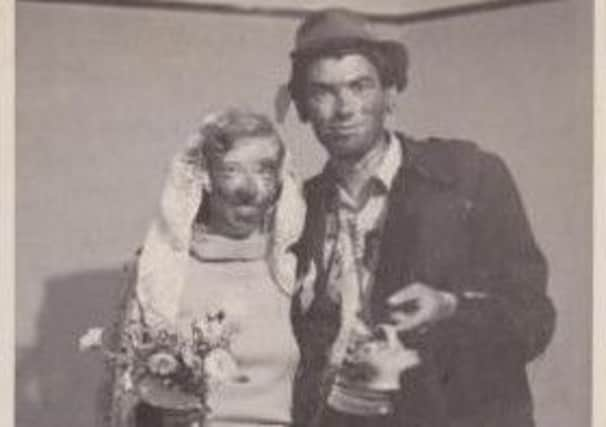The ‘Filthy and dirty’ hen and stag nights of old


Covered in soot and paraded around town and villages, The Blackening has been a right of passage for many a bride and groom on the cusp of married life.
Part humiliation and part humour, little research has been carried out on how couples have marked the last moments of their old lives before venturing into the new.
Advertisement
Hide AdNow Sheila Young, of the Elphinstone Institute of the University of Aberdeen, has spend two years illuminating the rituals, a form of which are still carried out in some parts of the North East today.
Ms Young said: “When you look at the blackening, most people thought it was a good luck thing.
“But historically, there was a lot of fear moving from one status to another, you were thought of as quite vulnerable.
“You were betwixt and between, you were not single and you were not married, and people needed rituals to help through times like that.”
Ms Young said the ritual of covering faces - and for men, large parts of their body - in soot before dowsing them in water could be seen as a form of purification in preparation for their new lives.
The Blackening has its roots in the old ceremony of feet washing, traditionally carried out across Scotland on the night before a wedding, where men and women would have their feet and legs covered in soot, which was thought to contain magical powers.
Advertisement
Hide AdAccounts suggest the bride’s friends and female relatives would prepare a tub of warm water where her feet could be washed.
Records do suggest, that in some cases the father of the bride would remove his daughter’s shoes with the mother placing the bride-to-be’s feet in the water while reciting a blessing.
Advertisement
Hide AdThe women would help scrub the feet, with some suggestion that a ring could be placed in the water with its finder the declared the next of the group to marry.
Although this ritual, which dates from the 1700s, became less formal over time, it is thought to have paved the way for the blackening to be introduced in the late 19th Century,
Ms Young said the new ritual emerged in the Angus area and took hold in places such as old Kincardine and Moray before reaching up to the Northern Isles.
Today blackening will see both brides and grooms covered from head to toe before being driven around the town or village.
Ms Young said: “It turns into this public humiliation ritual where the bride and groom are paraded round the streets but it is really shared their joy, in a strange kind of way.”
Soot was the black substance of choice to use during the ritual as it was considered to have magical properties, Ms Young said.
Advertisement
Hide AdBut she added: “Nowadays everyone attending the blackening collects the most disgusting concoction they can come up with such as out of date cans and left over food and puts it in large buckets.
“This is what they cover the couple in. Normally there is something sticky - like treacle, and something that sticks, like feathers or sawdust.”
Advertisement
Hide AdTradition dictates that the bride and groom are dowsed in water at the end of it all, with some accounts suggesting that throwing the groom in a horse trough of freezing water may be the preferred final act.
And while the Sheriff at Banff may have disapproved in 1934 after one particularly ribald gathering led to some blankets and jackets being damaged, the practices was broadly welcomed amongst communities, Ms Young said.
“One man I spoke to said he would be more worried if he wasn’t blackened,” she added.